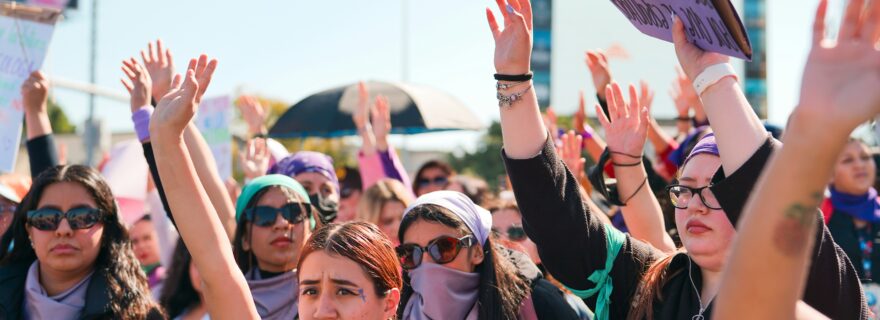Girls leading change
The International Day of the Girl Child highlights the importance of empowering girls across the globe. Today, girls themselves are at the forefront of change.
‘Sometimes when we go up on stage, when we are doing this advocacy thing, you hear from the crowd people saying, “How is she talking? Look at what she’s wearing... She even can’t speak better English.” So, these are things when you hear them you just literally go down, like “What am I even doing here?”’
Barbie, 16, Sierra Leone
Over the past decade, girls have increasingly protested against injustice and demanding gender equality, raising their voices and claiming space in decision-making processes. This kind of participation was a core aim behind the designation of the International Day of the Girl Child on 11 October.
Established fourteen years ago by the UN General Assembly, the day highlights the importance of empowering girls and raising awareness of their experiences. Today, girls lead the change – organising protests, shaping movements, and putting empowerment into action.
Girls' right to protest: legally recognised, but restricted
The UN Convention on the Rights of the Child (CRC) includes children’s civil and political rights, acknowledging that they are members of the political community who are affected by decisions-, while lacking the right to vote. Article 13 affirms the child’s right to freedom of expression, and Article 15 recognises the rights of the child to freedom of association and to freedom of peaceful assembly.
The right to freedom of assembly guarantees the expression of children’s voices in a democratic society, with peaceful protest a vital purpose of assembling. However, not all States respect this right.
The CRC permits only limited restrictions of this right—those deemed “necessary in a democratic society,” but many countries criminalise assemblies and protests that fail to meet certain conditions. Children may find themselves in trouble with the authorities because they don’t know the rules. This was well illustrated in a landmark Constitutional Court case in South Africa, Mlungwana v the State, which found that children, who do not have the right to vote should be allowed freedom of expression through peaceful protest, and not be arrested or detained for doing so.
Girls face unique challenges. Plan International’s interviews with adolescent girl activists revealed that many experience heightened self-doubt shaped by gender stereotypes and societal expectations, as illustrated by Barbie’s words, quoted at the start of this article, and some have fears for their safety such as sexual violence and harassment.
Restrictions and barriers have not stopped girls; why do girls stand up?
Despite all the obstacles, girls continue to push for the changes they want to see—in their societies and in the world. UN Women notes that the girls role as activists is growing, from urging climate action to demanding gender equality and education. Girls take an active role to respond to need. The Committee on the Rights of the Child has consistently expressed concern about the situation of girls around the world. These concerns include discriminatory attitudes about the value of the girl child, harmful practices such as female genital mutilation, lack of access to sexual and reproductive health education and rights, menstrual protection, and adequate sanitation facilities. The Committee has also pointed to sexual abuse, obligatory hijab requirements, bans on wearing the hijab, lack of access to education. Girls’ activism around the world often mirrors these very concerns, as they raise their voices against the injustices that shape their daily lives.
Global Examples of Girls Protesting for Human Rights and Girls’ Rights
UNICEF (2024) has highlighted the leading role of girls in school strikes calling for urgent global action against climate change. In 2022, in the Islamic Republic of Iran, schoolgirls actively participated in the uprising against the mandatory hijab following the death of Mahsa Amini. Similarly, as noted in a USIP report (2021), girls and young women have been at the forefront of nonviolent campaigns in countries such as Bangladesh, where students mobilised for safety, and Nigeria where girls protested against police violence. An emerging trend in protests has been digital activism. Girls are among those increasingly using social media to organise, mobilise, and advocate, turning hashtags into collective calls for justice. An Afghan girl’s singing video went viral, and may have contributed to the regime withdrawing the ban on women and girls singing. She said later “It was risky. It felt risky at the time, but maybe I didn’t grasp the whole idea of it, because I was just 13 or 14”.
Empowerment
Girls have been powerful agents of change —fearlessly articulating their demands. In the Plan International report, most girls said their activism positively impacted their lives, infusing a sense of empowerment and capability.




0 Comments
Add a comment